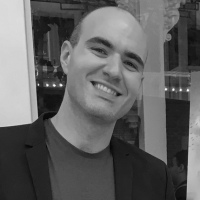She-Ra: The Next Step in Queer Representation
Executive producer Noelle Stevenson discusses how the battle other shows waged for queer representation helped open the door for She-Ra.
This She-Ra and the Princess of Power article contains minor spoilers for season one.
Queer fans of animation have always had to wait. Wait for any scraps of possible representation. Wait for a character to be revealed as queer (which can sometimes take years). Wait to see if those characters will be treated well.
This isn’t always the fault of the people making those series. Noelle Stevenson, executive producer of She-Ra and the Princesses of Power, knows just how much of a fight it’s been for several decades.
“It’s something that various people have fought really hard to include in their stories, with various levels of success,” Stevenson says. “Sometimes people get a hard no and they can’t do the story that they want to do, so they do what they can to get around that.”
It’s especially hard because animation is largely for kids, which means it’s more likely to draw controversy from closed-minded people. Many shows have been edited in other countries to avoid references to queer characters and some have been banned altogether.
Thankfully in recent years there have been some small successes in the world of animation. Series like Steven Universe, The Loud House, and Voltron: Legendary Defender have all included queer characters even though most of them were only revealed as queer later in their runs.
Furthur Reading: Voltron and the Fight to Make Shiro Queer
These victories have made it easier to give fans the representation they crave, which leads us to She-Ra. In a move queer fans are not used to, the series introduces two queer women in the series’ first season. Specifically Netossa and Spineralla are two queer women in a relationship. Even She-Ra’s social media pointed out they are “closely bonded.” Spinerella even refers to Netossa as “honey,” revealed by She-Ra’s offical website.
Stevenson stressed how seriously she took portraying queer characters in the series, something that’s been a big theme in her past works.
“As a gay woman, it’s something I think is really important to feature in kids animation,” she says. “Just to show the richness of experience in the world and the different ways that characters can love each other. It’s something that I hope is just a very natural and a very inherent part of the show.”
Thankfully these two characters won’t be the only queer characters we meet in She-Ra. Fans who listen very closely will learn two other characters from the original She-Ra series are dating as well. Stevenson hopes even small mentions like these make queerness seem “very natural, very common, and very accepted by the people in this world. No one character has to carry the weight of all the expectations.”
Further Reading: How She-Ra Balances Characters and Worldbuilding
You can even spot background queer couples in the series, including two characters that are drawn to resemble Stevenson and her partner. It demonstrates that even in the smallest ways, She-Ra is committed to making queer people feel included in its excellent first season.
Stevenson credits everyone who fought for representation before her in other shows and animation for being able to make She-Ra’s wide range of queer representation happen. The battles for queer rep aren’t over thought and Stevenson stresses it’s “never going to just be easy… but it’s something that’s very important to do.”
Hopefully the strides She-Ra and the Princesses of Power has made with its queer characters makes it even easier for future series to win any battles they might face.
She-Ra and the Princesses of Power drops November 13th on Netflix.
Shamus Kelley is a pop culture/television writer and official Power Rangers expert. Follow him on Twitter! Read more articles by him here!
